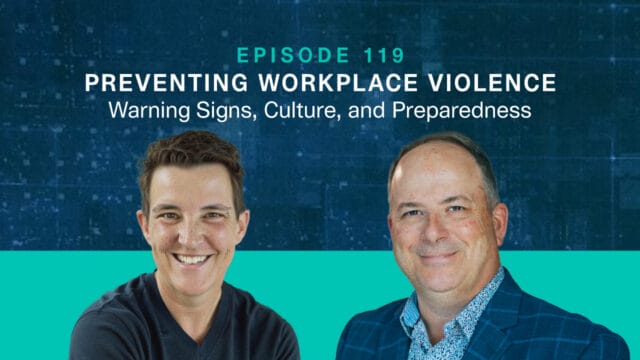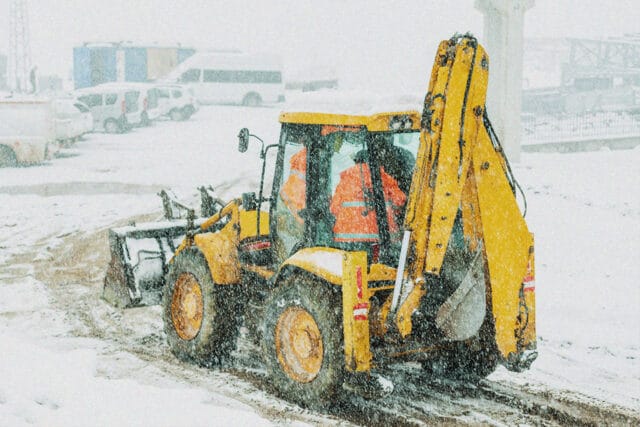
Insurance Verification Made Easy: A Q&A with Veriforce Expert Jamie Brener

Insurance verification is critical for managing risk, ensuring compliance, and maintaining operational continuity — especially in high-risk industries. At Veriforce, we take the burden off your shoulders by doing the heavy lifting. Our expert-driven, automated processes ensure your contractors meet insurance requirements with ease, making insurance verification simpler and more reliable than ever before. Veriforce expert, Jamie Brener, explores current trends, challenges, and solutions to streamline this process with Veriforce.
Q: What is insurance verification and why is it important?
A: Insurance verification refers to reviewing and confirming that contractors or vendors hold active insurance policies that meet clients’ coverage and limit requirements. This process is essential in managing risk for our clients, who may be liable for incidents arising from contractor activities. Insurance verification ensures that contractors have adequate coverage to handle potential claims for bodily injury, property damage, or other liabilities that could arise during operations.
Importance of Insurance Verification for Clients:
- Risk Mitigation: By verifying insurance, clients reduce the risk of uninsured losses. If a contractor lacks sufficient insurance, the client may face significant financial liability for damages or injuries arising from the contractor’s work.
- Regulatory Compliance: Many industries require specific insurance coverages by law. Insurance verification helps clients comply with these legal requirements, reducing the risk of regulatory penalties.
- Business Continuity: Confirming that contractors have adequate insurance helps ensure that incidents don’t interrupt the client’s business operations. When contractors are appropriately insured, potential claims can be managed without impacting the client’s financial stability.
- Reputational Protection: An effective verification process protects the client’s reputation by ensuring all contractors meet industry standards for safety and compliance, creating a safer work environment overall.
- Enhanced Contractor Accountability: When contractors are required to meet insurance standards, they are more likely to adhere to safe and compliant practices, ultimately aligning with the client’s standards and policies.
Q: What are the current insurance trends in high-risk industries?
A: Current insurance trends in high-risk industries are shaped by a combination of emerging risks, regulatory changes, and advancements in technology. Here are some biggest trends:
- Increased Cyber Liability Coverage: High-risk industries like manufacturing, energy, and construction are more vulnerable to cyber-attacks, leading to an increased mandate for cyber liability insurance. These industries are investing in more widespread cyber coverage to protect against data breaches, ransomware, and operational disruptions caused by cyber events.
- Parametric Insurance and Innovative Risk Transfer: To handle natural disaster risks, parametric insurance (policies that pay out based on event parameters rather than assessed damage) is growing. In high-risk industries affected by weather or climate events, this is important for quicker payouts and targeted risk management.
- Environmental Liability and Pollution Coverage: High-risk industries such as oil, gas, and construction face growing liabilities around environmental pollution and climate-related exposures. Carriers are now offering policies to address these risks, including coverage for sudden pollution events and broader environmental protection to mitigate the impact of new regulations and public scrutiny on environmental compliance.
- Increased Focus on Employee Health and Safety: Worker’s compensation and employer liability insurance are becoming more inclusive. Policies are now covering mental health risks and employee wellness programs to address the demands for safer and healthier working conditions in high-risk industries. More vigorous occupational health and safety requirements are prompting coverage standards, particularly in industries like mining, construction, and logistics.
- Digitalization and Use of AI in Underwriting: The use of AI and machine learning in underwriting helps carriers assess risk profiles more accurately. High-risk industries are also seeing IoT implementation (like sensors on machinery or wearables for employees) to monitor risks in real-time, reducing premiums for companies that invest in safety and predictive risk management tools.
- Excess and Surplus (E&S) Lines Growth: High-risk industries are increasingly using E&S lines to secure policies with flexible terms that standard carriers may not offer. This trend provides more options for businesses with unique or high-hazard exposures, such as those in oil and gas, heavy construction, and waste management.
Q: Contractors and suppliers should meet or exceed a hiring client’s standards. How does this work for insurance?
A: For contractors and suppliers, meeting or exceeding a hiring client’s insurance standards ensures that they operate in a way that aligns with the client’s risk management requirements. High-risk industries like construction, oil and gas, and manufacturing have unique liability concerns, and hiring clients often specify insurance standards to cover potential risks. Here are a few ways this works:
Construction
General Liability and Completed Operations: In construction, hiring clients often require contractors to have high general liability and completed operations coverage limits. For example, a general contractor on a large construction project may require all subcontractors to have a minimum of $2 million in general liability coverage to protect against potential injury or property damage claims.
Workers’ Compensation: Clients often mandate workers’ compensation insurance to cover job site injuries and ensure no liability is passed on to the hiring company. For instance, a state transportation agency might require all contractors on a bridge construction project to carry workers’ comp policies that meet specific state limits.
Oil and Gas
Pollution Liability: For environmental protection, oil and gas operators often require pollution liability insurance for contractors working with hazardous materials. This ensures coverage for environmental damage or spills. For example, an oil company might require all third-party transport companies to carry pollution liability coverage of at least $1 million to mitigate risks related to accidental spills.
Excess Liability: Due to high potential losses, oil and gas clients often mandate high excess liability limits for contractors, covering above and beyond primary policies. If a contractor’s general liability policy is $1 million, a hiring client might require an additional $5 million umbrella policy.
Manufacturing
Product Liability: In manufacturing, hiring companies may require suppliers to carry product liability insurance to cover risks associated with defects or failures in supplied parts. For example, an auto manufacturer sourcing parts from multiple suppliers may require each one to carry product liability insurance to cover potential recalls or legal claims from defective parts.
Cyber Liability: With increased digitalization, some manufacturing companies require contractors with access to proprietary information to have cyber liability insurance. This protects against data breaches and unauthorized access that could harm the client’s operations or reputation.
In these cases, exceeding client insurance standards can make contractors more attractive and competitive. For example, a construction contractor with additional safety certifications and higher insurance limits might be viewed favorably in contract bids, demonstrating a commitment to risk management and reducing potential liability for the client.
Q: What are the risks to a hiring client if contractors are not properly insured? (please explain and provide a real-world example if possible)
A: If contractors are not properly insured, a hiring client faces several risks that could lead to financial, operational, and reputational damage. Here are some specific risks and a real-world example:
Financial Liability for Accidents or Damage
Risk: When a contractor lacks adequate insurance, the hiring client may be financially liable for accidents or damages resulting from the contractor’s work. This includes costs associated with bodily injury, property damage, and legal expenses.
Example: In 2019, a construction company faced millions of dollars in claims after a contractor without sufficient insurance accidentally damaged utility infrastructure, causing extensive service interruptions. The general contractor had to absorb the costs, as the contractor could not cover the damages.
Operational Disruptions
Risk: Without insurance, a contractor may lack the financial stability to recover from accidents, project delays, or equipment losses, causing delays or shutdowns for the hiring client. This is especially critical in industries like construction, oil and gas, or manufacturing, where timely project completion impacts revenue.
Example: In the oil industry, a refinery shutdown caused by a contractor’s mishap resulted in weeks of lost productivity. The contractor, who did not carry adequate liability insurance, could not compensate for the losses, and the hiring client had to take the financial and reputational consequence.
Legal and Compliance Violations
Risk: Many industries have legal requirements for contractor insurance. If a hiring client works with uninsured contractors, they could face fines, regulatory penalties, or even lawsuits. This is particularly relevant in fields with strict safety and environmental standards.
Example: A logistics company faced regulatory fines after a contractor without proper auto liability insurance caused an accident on a public highway. The hiring client was held accountable because they failed to ensure the contractor met mandatory insurance requirements.
Reputational Damage
Risk: Incidents involving uninsured contractors can harm a hiring client’s reputation, especially if the issue leads to public scrutiny, legal disputes, or negative media coverage.
Example: A large retail chain suffered reputational damage when a contractor caused a fire while working in one of its stores. It was revealed the contractor did not have general liability insurance, leading to negative publicity and calls for stricter contractor vetting processes.
Hiring properly insured contractors is critical for risk management, as it safeguards the client from absorbing liabilities, ensures compliance with regulations, and minimizes the potential for costly delays and reputational harm.
Q: What are the challenges for hiring clients when it comes to ensuring their contractors have the proper coverage? And how do they monitor that?
A: Ensuring contractors have the proper insurance coverage presents several challenges for hiring clients. A contractor management platform can streamline this process, offering monitoring and compliance support to address key issues:
Key Challenges for Hiring Clients
- Verifying Detailed Policy Coverage: Clients often find it difficult to confirm that policies meet all required specifications, such as the correct limits, exclusions, and expiration dates. Certificates of insurance (COIs) can be difficult to understand without the proper training, certifications, and experience.
- Tracking Renewals and Lapsed Policies: Policies change over time, and without regular updates, hiring clients can face risks from expired or altered policies, which could leave them exposed if an incident occurs.
- Handling Complex Compliance Requirements: Different contractors need different types of coverage (general liability, workers’ compensation, auto, or specialized coverages). Managing these requirements across multiple contractors is complex and resource-intensive.
- Ensuring Real-Time Compliance: Clients must stay informed of any changes to a contractor’s coverage status in real time. Delays in notification can leave clients exposed to risk if there’s a gap in coverage.
How Veriforce Can Help Monitor Insurance Compliance
- Compliance Tracking: Veriforce’s platform allows clients to track insurance documents and renewal dates. This reduces the risk of lapsed policies by sending automatic notifications for upcoming renewals, ensuring that all contractor coverage remains active and up-to-date.
- Detailed Policy Verification: Veriforce verifies COIs and policy documentation to confirm that each contractor meets specified limits and coverage types. This means clients can be confident in each contractor’s compliance with insurance standards, reducing oversight.
- Customized Compliance Requirements: Veriforce enables hiring clients to set custom compliance standards specific to their industry and risk profile. This ensures that contractors meet all coverage requirements and can adapt as regulatory needs or project risks change.
- Comprehensive Reporting and Record-Keeping: Veriforce’s platform offers a centralized location for insurance records, COIs, and compliance status. This helps clients easily access and report on contractor compliance, which is essential for audits and regulatory requirements.
Using Veriforce, clients can more effectively manage insurance compliance across large groups of contractors, helping them mitigate risk and focus resources on core operational needs.
Q: What is the best and most efficient way for hiring clients to manage insurance verification?
A: The best and most efficient way for hiring clients to manage insurance verification is through a centralized compliance management platform. This type of system ensures real-time monitoring, minimizes human error, and allows for streamlined tracking of insurance requirements and renewals across multiple contractors.
Verification Processes
Platforms, like Veriforce, track and verify certificates of insurance (COIs) and policy compliance. Alerts notify clients of expiring policies, incomplete information, or discrepancies, allowing timely updates without manual intervention.
Set Clear, Customizable Standards
Clients should have standardized insurance requirements that align with industry-specific risks, such as required limits, specific coverages, and exclusions. Contractor management systems allow clients to customize and set these standards for various contractor roles, making it easy to verify each contractor against tailored requirements.
Centralize Documentation and Records
A centralized system consolidates all COIs, policy information, and renewal dates in one place, simplifying audits and compliance checks. This setup allows clients to track which contractors are compliant at any given time, reducing oversight and saving time during audits.
Use Real-Time Monitoring and Notifications
Effective platforms offer real-time alerts and dashboards, ensuring that clients are immediately informed if a contractor’s policy lapses or fails to meet standards. Notifications for policy expirations, missing endorsements, or coverage changes allow for quick resolution before issues arise.
The Need for Dedicated Compliance Experts
Having access to dedicated insurance experts, such as those available through third-party verification services, provides an added layer of expertise. These experts can dig into policy exclusions, endorsements, and other complexities, ensuring each contractor’s coverage is appropriate and compliant.
Reporting and Analytics for Continuous Improvement
Using reporting features, hiring clients can analyze trends, such as the most common coverage gaps among contractors. This data allows clients to adjust compliance strategies, establish more precise requirements, and manage insurance risk proactively.
Platforms like Veriforce integrate all these features, allowing clients to set specific insurance requirements and track compliance in real-time. With these tools, hiring clients can efficiently manage large networks of contractors, reduce liability exposure, and maintain compliance, ultimately streamlining the entire process for risk management.
Q: How can Veriforce help with insurance verification?
A: Veriforce provides a comprehensive insurance verification service, supporting hiring clients with all aspects of managing and ensuring compliance for contractor insurance.
Ways Veriforce Supports Clients in Insurance Verification
Automated Verification and Tracking: Veriforce collects, tracks, and verifies certificates of insurance (COIs), removing the need for clients to handle these tasks manually. Automated reminders and notifications alert clients of upcoming policy expirations, missing documents, and other compliance gaps, which simplifies oversight and reduces administrative burdens.
In-Depth Policy Review: Veriforce goes beyond checking COIs by performing an in-depth review of insurance policies. This includes examining policy limits, endorsements, and exclusions to ensure coverage aligns with client requirements. This level of analysis ensures contractors have comprehensive coverage that meets industry standards, reducing potential risks for clients.
Customizable Compliance Standards: Veriforce allows clients to customize insurance requirements specific to their needs. Whether a client requires specialized coverages like environmental liability or high policy limits, Veriforce can configure the system to verify each contractor against these unique standards.
Real-Time Compliance Monitoring: Veriforce offers real-time notifications, allowing clients to see each contractor’s compliance status. Updates are provided when a contractor’s coverage changes or a policy lapses, helping clients address issues before they lead to risk exposure.
Centralized Document Management: All contractor insurance documents, COIs, and compliance records are stored in a centralized system. This makes it easy for clients to access, manage, and track compliance data across all contractors, particularly useful during audits or regulatory checks.
Expert Compliance Support: Veriforce’s team of insurance verification specialists can manage policy complexities, such as endorsements and exclusions. These specialists provide added assurance that insurance requirements are met, offering support that helps clients make more informed risk management decisions.
Detailed Reporting and Analytics: Veriforce’s reporting tools allow clients to analyze contractor compliance trends over time, identify recurring coverage gaps, and adjust requirements as needed.
How Veriforce Differs from Competitors
Comprehensive Policy Verification: Unlike some competitors who may only review COIs, Veriforce’s team of insurance verification specialists complete in-depth reviews to ensure clients receive the complete coverage required, addressing endorsements, limits, and exclusions.
Customizable Compliance Standards: Veriforce’s platform allows greater flexibility in setting and enforcing unique insurance requirements tailored to the client’s industry and risk tolerance, giving hiring clients a competitive advantage in risk management.
Dedicated Industry Expertise: Veriforce’s team includes insurance experts who specialize in understanding and verifying complex policies. This expert support is especially valuable for clients in high-risk industries, where standard COI verification may not be sufficient.
Veriforce delivers a more thorough, flexible, and reliable insurance verification solution compared to standard industry offerings. Contact us to learn how we can help.
About the Author
Jamie Brener, ARM, CIC, CWCP, ERIS
Senior Advisor, Insurance and Procurement
Jamie brings over 20 years of dedicated expertise as an underwriter and advisor in commercial insurance. She collaborates closely with safety professionals and risk managers across industries to implement best practices in procurement and insurance. Jamie’s deep knowledge spans insurance regulations, underwriting principles, and regional and national industry standards, making her a trusted resource in the field. She is a licensed insurance producer and holds esteemed designations, including Associate of Risk Management (ARM), Certified Workers’ Compensation Professional (CWCP), Energy Risk & Insurance Specialist (ERIS), and Certified Insurance Counselor (CIC).




